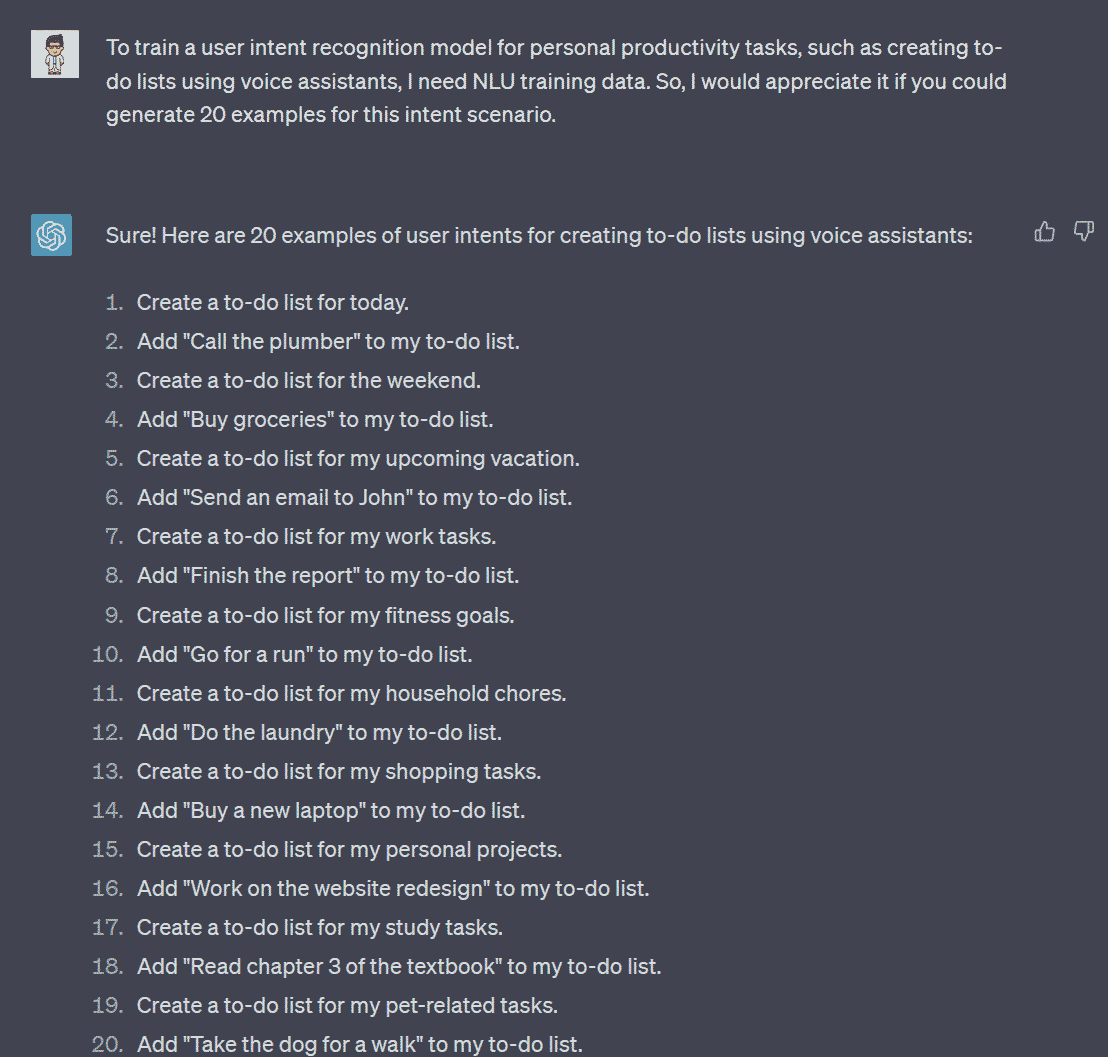Traditionally, collecting and generating high-quality training data for NLU models has been a major challenge. This is because data collection and annotation is often a time-consuming and expensive process that requires a significant amount of human effort and expertise. Here are some traditional barriers to collecting and generating training data for intent recognition models:
- Limited Access to Data: Lack of access to large, high-quality datasets.
- Cost of Manual Annotation: Manual annotation can be time-consuming and expensive, requiring specialized knowledge.
- Lack of Diversity in Training Data: Difficulty in collecting diverse data that covers a range of topics, languages, and dialects.
These barriers can limit the accuracy and effectiveness of intent recognition models. However, new techniques like using AI-based tools such as ChatGPT can help overcome these barriers and generate high-quality training data at scale.
ChatGPT is a cutting-edge language model developed by OpenAI that uses deep learning to generate human-like responses to text inputs. One of the key applications of ChatGPT is as a tool for generating training data for intent recognition models.
By leveraging the natural language generation capabilities of ChatGPT, it is possible to generate high-quality, diverse training data at scale. ChatGPT can be trained on large datasets of existing text and then used to generate new examples of user inputs and corresponding intents. This process can help overcome traditional barriers to data collection and annotation, such as limited access to data, high costs of manual annotation, and lack of diversity in training data.
One of the key advantages of using ChatGPT for data generation is that it can generate a wide range of inputs that cover a variety of topics, languages, and dialects. This can help ensure that intent recognition models are trained on a diverse range of data that accurately reflects the needs and preferences of different user groups. Additionally, because ChatGPT is an AI-based tool, it can generate data at a much faster rate than manual annotation methods, making it a cost-effective solution for organizations that need to generate large volumes of training data.
Another benefit of using ChatGPT for data generation is that it can help reduce data bias. Because ChatGPT generates new examples of user inputs and intents based on existing data, it can help identify and correct biases in the training data. This can lead to more accurate and fair intent recognition models that perform well for all users.
In summary, ChatGPT is a powerful tool for generating high-quality, diverse training data for intent recognition models. By leveraging the natural language generation capabilities of ChatGPT, organizations can overcome traditional barriers to data collection and annotation, reduce data bias, and generate training data at a much faster rate than manual methods. With the help of ChatGPT, the accuracy and effectiveness of intent recognition models can be significantly improved, leading to better user experiences and increased productivity.
Some examples:
I require NLU training data to train a user intent recognition model. Therefore, I would like you to create 20 examples for the following intent scenario: “A user requests to check their bank account balance.”

To train a user intent recognition model for setting reminders, scheduling appointments, and setting alarms using voice assistants, I need NLU training data. Hence, I request you to generate 20 examples for this intent scenario.

To train a user intent recognition model for personal productivity tasks, such as creating to-do lists using voice assistants, I need NLU training data. So, I would appreciate it if you could generate 20 examples for this intent scenario.

As we come to the end of this article, it’s clear that the world of AI is rapidly changing and evolving at an unprecedented pace. With breakthroughs in natural language processing, data collection and generation, and machine learning, we are witnessing a new level of AI that promises to transform the way we live and work.
The unlimited data collection and generation capabilities of tools like ChatGPT are just one example of the incredible advances that are being made in AI development. With the ability to generate high-quality, diverse training data at scale, intent recognition models are poised to become more accurate, more effective, and more responsive to the needs and preferences of different user groups.
But this is just the beginning. As we continue to push the boundaries of what’s possible in AI, we can expect to see even more grand changes in the near future. From the development of new algorithms and architectures to the integration of AI with other technologies like robotics and IoT, the possibilities are truly limitless.
So let us embrace this new level of AI with enthusiasm and excitement, and let us work together to harness its power for the betterment of humanity. The future is bright, and the possibilities are endless.
Stay tuned!
